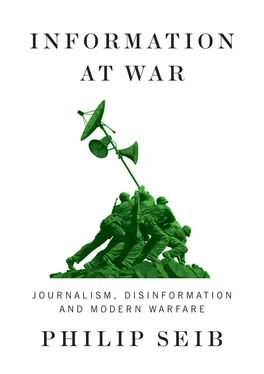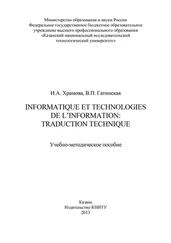Carl von Clausewitz, On War
Preface and Acknowledgments
I have been writing about media and war for several decades, focusing mostly on 20th- and early 21st-century conflicts. “Media” in that context meant mostly traditional print and broadcast journalism, and cases such as the Vietnam War and Iraq War provided plenty to write about.
Then came the media explosion: regional and global satellite television channels that could sail above many of the world’s borders, and the internet-based information venues that made obsolete the notion of the “audience” as merely a passive recipient of information. Within the span of a few years, many of the nearly 8 billion people on the planet had access not just to unprecedented quantities of journalism, but also information about health, education, making a living, and other essential topics (with some cat videos added to the mix).
The democratization of the information process has had profound effects. When George Floyd was killed on a Minneapolis street in May 2020, how did we find out about it? A bystander captured the horrific episode on a cellphone camera, and within a short time the video could be seen by much of the world. When Bashar al-Assad murdered his own people with chemical weapons, how did we learn it had happened? Some brave Syrians filmed and described events and posted the information online. Again, the world became a witness.
Information is powerful, and if it is accurate and meaningful, the more the better; the public benefits. But the new information venues also lend themselves to manipulation, including governments’ efforts to destabilize other nations’ political systems. Such weaponization of information requires countermeasures that depend on the public understanding the components of media literacy. Meanwhile, militaries are finding that information can be a valuable supplement to conventional weaponry, making their own efforts more effective and undermining adversaries’ willingness to fight.
These are complex and vital matters. This book is designed to stimulate thinking about the past, present, and future of information at war.
Acknowledgments
Several of my students at the University of Southern California (USC) served as my research assistants during the writing of this book: Adriana Robakowski, Felix Bartos, and Fatime Uruci. They worked hard, and I thank them all. Also at USC, I have consistently been supported by Annenberg School Dean Willow Bay and Journalism School Director Gordon Stables.
Others who helped include another USC student, Christopher Cheshire, who provided some bibliographic material, and an international array who read parts of the manuscript and supplied comments and specialized material: Mariami Khatiashvili, Barbora Maronkova, Di Wu, and Mohamed Zayani. They all have my gratitude.
Polity Books is once again a wonderful partner. Publisher Louise Knight and her assistant Inès Boxman are quick and thorough in all editorial matters, and they are consistently a pleasure to work with. I also thank the two anonymous reviewers whom Polity asked to read my draft manuscript. Their suggestions were most helpful.
Much of my writing took place amidst the Covid-19 pandemic and social isolation. I was buoyed by the friendship of Anita Yagjian. Special thanks to Machiavelli (Mac) Seib, my canine companion and editorial assistant, who helped me retain a bit of sanity by requiring frequent trips outdoors.
Rage – Goddess, sing the rage of Peleus’s son Achilles ,
murderous, doomed, that cost the Achaeans countless losses ,
hurtling down to the House of Death so many sturdy souls ,
great fighters’ souls, but made their bodies carrion ,
feasts for the dogs and birds ,
and the will of Zeus was moving toward its end .
Begin, Muse, when the two first broke and clashed ,
Agamemnon lord of men and brilliant Achilles .
Homer, The Iliad 1
Before social media, there were bards. They provided information about war to scattered listeners as they traveled the countryside and recited their stories of warriors and gods to audiences enthralled by tales of bloody daring. In Homer’s case, his vivid reporting about the siege of Troy was delivered about four centuries after the events he described, a concept that may be hard to grasp by those of us accustomed to real-time bulletins from today’s battlefields.
The Iliad has through the years been an anchor in the history of conflict. Like many tales of war, it is both horrifying and rousing. The Iliad dates to roughly 3,000 years ago, but its depictions of combat are not too far removed from the grittiest reporting from Syria, Somalia, Afghanistan, and other places dominated by contemporary warriors’ rage.
People throughout the world today may be distant in time and space from most conflicts, but instead of depending on the occasional bard’s visit to learn about a war hundreds of years after it was fought, we can now get information about war quickly and constantly. Our televisions and mobile devices can bring us war as it is being fought. We stare at the wine-dark blood of a distant battlefield for a few moments and then casually move on to more information from more sources about more topics.
Information at war is sometimes history. Without Homer’s words, what would we know about the Trojan War? Spearheads and chunks of pottery from a spot in today’s Turkey are information of a sort, but such artifacts do not stir the spirit as words do. And today, words need not stand alone; they arrive supplemented by sounds and images from the battleground.
We will see that information at war has many functions, memorializing wars of the past and shaping wars of the present. As was the case on the plains of Troy, rage still begets more rage, and fighters’ souls continue to hurtle down to the House of Death. Warfare’s carnage belongs to no single epoch. As in Homer’s time, there are today plenty of wars. Inflicting death and destruction for purportedly noble reasons remains a persistent trait of humankind.
“Information” can appear in varied forms. In this book, one mutation of information that will receive considerable attention is disinformation , which has been defined by UNESCO as “information that is false and deliberately created to harm a person, social group, organization, or country.” This is different from misinformation , which is “information that is false but not created with the intention of causing harm,” and it may be disseminated in the belief that is true. Another category is mal-information , that is “based on reality, but is used to inflict harm,” such as true information that violates someone’s privacy without a public interest justification. 2(The work of gossip columnists and paparazzi may be included in this category.) Disinformation has long been used by governments as a weaponized form of communication that is a tool of warfare. Today’s technologies make this more pervasive and more effective.
Some other terms used in this book are these:
“troll”: communicator, human or mechanical, of inflammatory material designed to provoke or harass;
“bot”: performs automated tasks, such as high-speed, high-volume retweeting or attacks on a computer network;
“deepfake”: video and speech combination for which a computer has learned appearance and speech patterns of the targeted subject. (If you see a realistic online video of Barack Obama endorsing Donald Trump, you may assume it is a deepfake.)
Another principal focus of this book is war journalism. With so much recent emphasis on disinformation as a way to affect public opinion, the importance of the news media is sometimes overlooked. When considering information at war, a holistic approach is needed. Despite efforts in numerous countries to undermine the credibility of journalists – through tactics that include labeling their work “fake news” and in some places imprisoning them (or worse) 3– much of the global public still uses news coverage as an important element in shaping opinions about wars near and far.
Читать дальше












